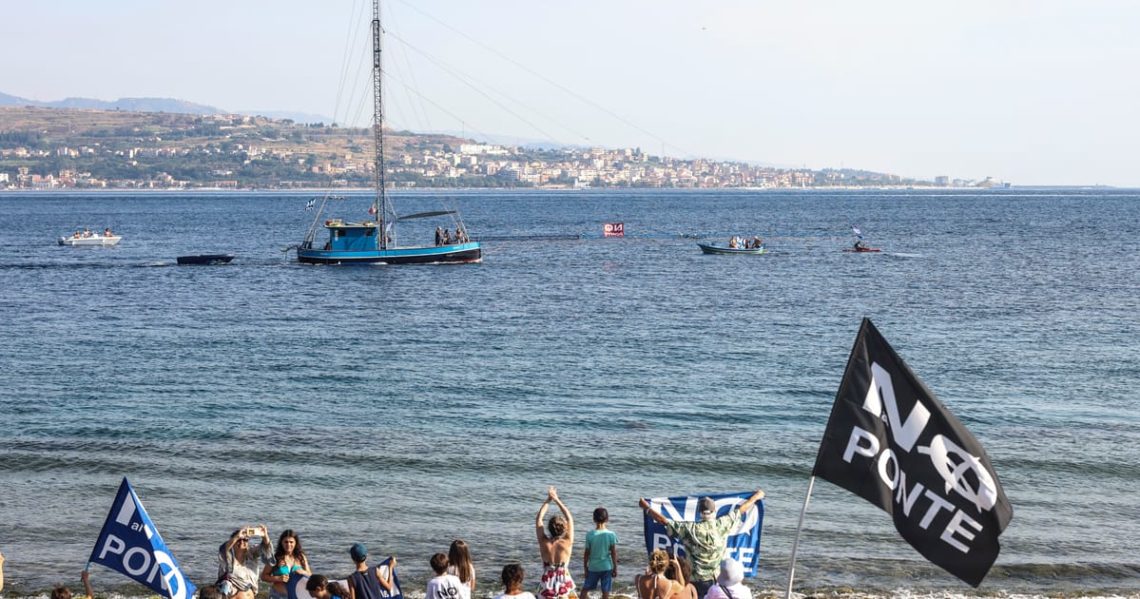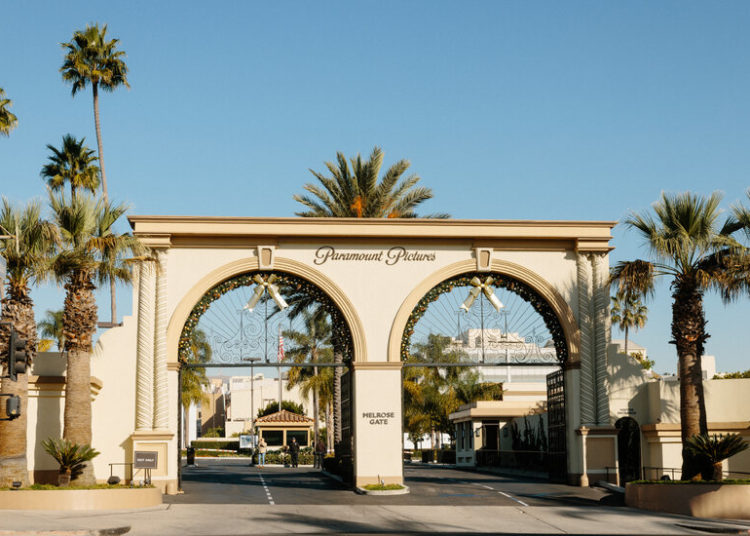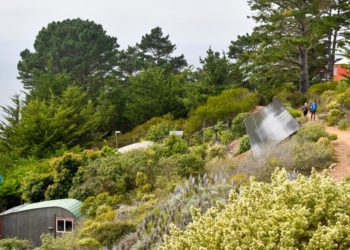The leader of what was once Italy’s largest separatist party may end up being the politician who unites the boot from top to bottom.
Hemorrhaging support and risking control of the far-right party that he heads, Deputy Prime Minister Matteo Salvini is gambling his political future on a pharaonic bridge project that will connect the Italian mainland to the island of Sicily.
The project faces a critical test on Wednesday when Italy’s Court of Auditors is expected to decide whether it complies with Italian and European Union law. A negative ruling by the court, which is a sort of public financial watchdog, would not necessarily prevent the project from going ahead. But it could prove politically costly for a project already under fire from Salvini’s political opponents.
Salvini, who is infrastructure minister as well as leader of the far-right League party, has called the project “the most important public work in the world,” and said construction could start in November. If built, the 3.7-kilometer suspension bridge spanning the strait of Messina would be the longest of its kind, connecting the toe of the Italian peninsula to the northeastern tip of Sicily.
It would provide the island’s 4.8 million inhabitants, who have until now relied on ferries and planes for access to the outside world, with road and rail lines to the rest of Europe.
The firebrand politician is an unlikely champion for the project. His party was founded more than three decades ago in the hinterlands of Italy’s industrial north with a goal of breaking the region away from the rest of the country.
The League’s founder, Umberto Bossi, made stopping “Roma Ladrona” (thieving Rome) his rallying cry, pledging to put an end to the redistribution of northern tax revenue to the more impoverished south. He vocally opposed projects like the redevelopment of the former steelworks in Naples’ Bagnoli district, which he saw as a northern-funded giveaway likely to end up lining the pockets of southern politicians.
Now Salvini, who vocally opposed the bridge as recently as 2016, has become the foremost proponent of the massive public work, estimated to cost €13.5 billion. That would make it among the most expensive infrastructure projects ever built in Italy — and in the country’s southernmost regions to boot, known for the mafia and corruption.
“Everybody in Lombardy and in Veneto is angry at Matteo [Salvini] and his obsession with the bridge,” said one senior League official who was granted anonymity to speak candidly, referring to the League’s two heartland regions. “Some think it won’t happen, and some think it will. But almost everyone in the party in the north thinks it’s a waste of money.”
Bridge to somewhere
The idea of a bridge connecting the Mediterranean’s biggest island to the Italian peninsula has a long history. Already in antiquity, the Roman naturalist Pliny the Elder wrote of plans to span the strait with a series of interconnected boats. In 1866, five years after the unification of Italy, the future Prime Minister Giuseppe Zanardelli proclaimed: “Whether above the current or under it, let Sicily be united to the continent!” (His favored solution was an underground tunnel.)
The idea of a bridge was revived in the 1970s and 1980s after scientific studies judged it was technically feasible. But it was only in 2009, under the premiership of Silvio Berlusconi, that workers symbolically broke ground on the Messina bridge. Technocrat Mario Monti, who replaced Berlusconi during the financial crisis, shelved the endeavor, citing the need to cut costs. In 2016 center-left Prime Minister Matteo Renzi briefly made his own push, which also ended up going nowhere.
Salvini — who built his political career on bold and divisive stunts, and who propelled his party into government after a Damascene conversion from regionalism to far-right nationalism — may be the politician who has come closest to seeing the millennia-old ambition realized.
When Prime Minister Giorgia Meloni took power in 2022, Salvini was hoping to land the position of minister of the interior, a natural fit for a politician who came to prominence campaigning against immigration.
But Meloni’s landslide victory left the League with little leverage in the coalition government, and Salvini found himself shunted into the less prestigious role of infrastructure minister. The bridge is his attempt to turn that relegation into a leading role.
“Salvini is something of a political animal. He lives for the hot button issue of the day,” said Nicoletta Pirozzi, who heads the EU affairs program for the pro-European Istituto Affari Internazionali think tank. “This idea of a major public work serves as his way to make his mark … to give himself a bit more centrality in the public debate.”
A spokesperson for Salvini declined to comment.
Between Scylla and Charybdis
Judging by the polls, Salvini’s gambit has yet to pay off. At 9 percent, the League is polling far behind its senior coalition partner, Giorgia Meloni’s Brothers of Italy party, which has the support of nearly a third of the electorate.
The Messina bridge has divided public opinion: Supporters point to the economic benefits, while detractors cite everything from the risk of earthquakes to environmental impacts and graft in a part of the country famous for corruption.
“At the moment, Salvini is caught between regional governors who need to answer to their constituents, the SMEs that are the backbone of Italian capitalism, and a populism that I wouldn’t even define as conservative, but actually far-right,” said Teresa Coratella, deputy head of the Rome office at the European Council on Foreign Relations.
Meanwhile, Salvini’s party has suffered a steady exodus of members, many from the north. Old-guard stalwarts like former Budget Minister Giancarlo Pagliarini have expressed skepticism: “It’s a bit of a mysterious object. That’s why whenever I hear about it, I say ‘Oh Lord.’”
Coratella said that Salvini has so far benefited from a lack of challengers within his party. But his luck may be taking a turn for the worse. Roberto Vannacci — a former general and a member of the European Parliament who like Salvini built his reputation on colorful outbursts — has galvanized parts of the electorate uneasy with Meloni’s moderate foreign policy. Vannacci’s rising star risks eclipsing Salvini, beating him at the outrage game he pioneered.
So far, however, Salvini has managed to keep his party backing the bridge, despite a previous warning from Italy’s Court of Auditors in September that raised doubts as to whether the project will be as economically advantageous as the government claims.
Meanwhile, WeBuild, the company heading the consortium that is building the bridge, has started hiring the thousands of workers that will be needed for construction.
“There are the outcasts of the League who still use the argument, ‘This is a waste of money,’” said League senator Claudio Borghi. “But most of the party understands this is something that’s been beneficial for the north.”
Borghi added that even the more old-school regionalist governors were “starting to understand” the purpose of the project.
Construction was meant to start this summer, but has been delayed.
“I think it will benefit the country as a whole,” said Marco Dolfin, a League councilor in the Veneto region. He was quick to point out, however, that the project itself originated with Berlusconi, not Salvini.
“We don’t go on the streets or to rallies with a flag that says ‘Long live the bridge,’” Dolfin said.
The post Italy’s Matteo Salvini has a bridge to sell you appeared first on Politico.




